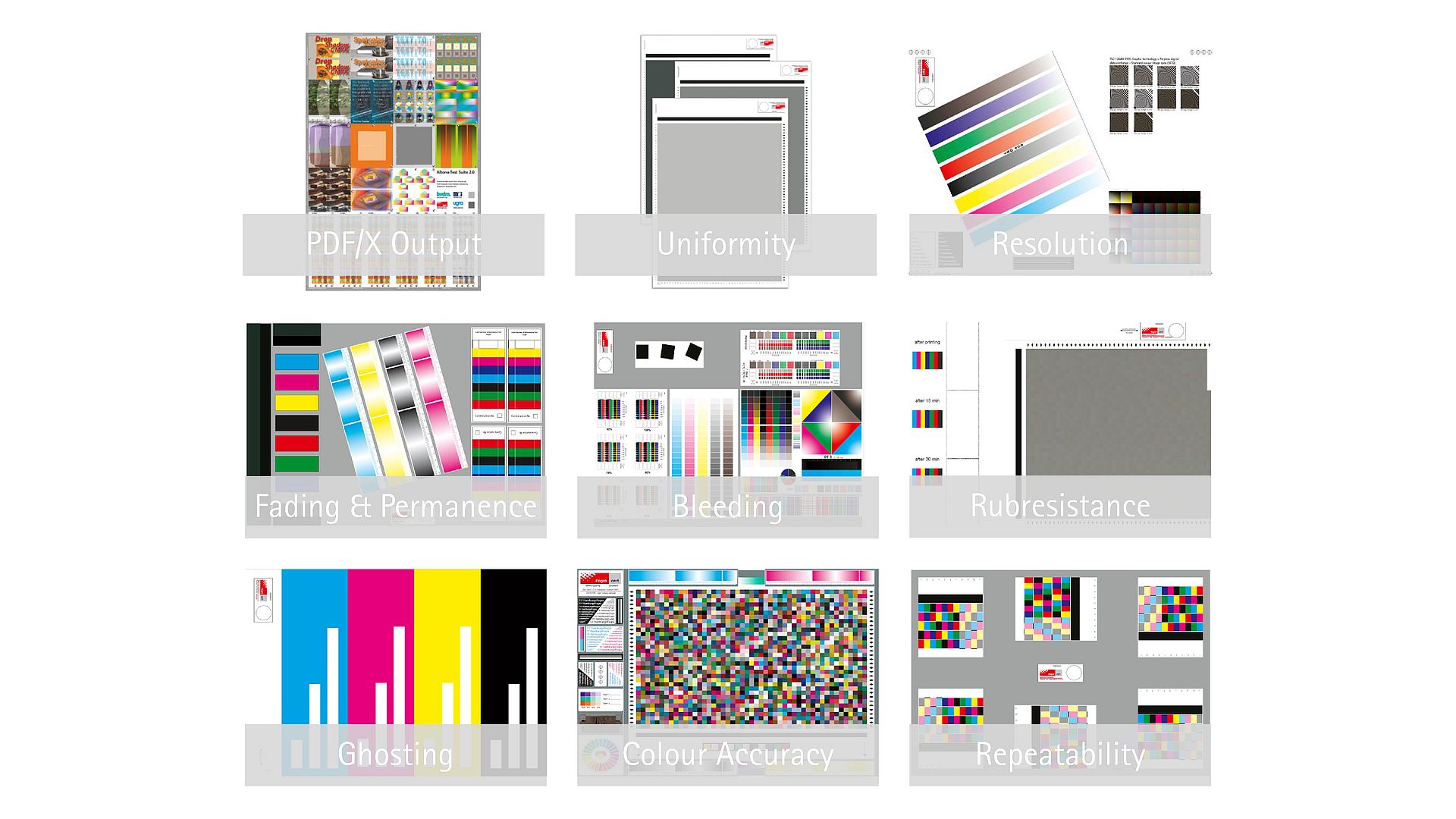Topic of your interest
The printing systems are thoroughly tested and certified on the basis of the extensive criteria of ISO 12647-8. The certification comes with a certificate and a FograCert logo in addition to the technical test report, which shows the product's conformity to ISO 12647-8. Certification details are listed in our FograCert database.
Our procedure
Preparation phase:
Agreement on the system combinations
Delivery of the digital test forms
Test phase:
approx. two-day audit on site, carried out by a Fogra employee
Evaluation of the results in the Fogra laboratory
In case of a successful certification we issue a certificate and list your system in our FograCert database.
Your printing system is examined against the following criteria:
PDF/X compliance: Ghent Output Suite 5.0 and informative evaluation of Altona Test Suite 2.0 Technical 2
Gloss, coloration and fluorescence of the substrate
Colour accuracy incl. colour gamut
Uniformity
Aging and light fastness
Colour drift (fading)
Short- and long-term repeatability
Mechanical stability (drying)
Colorimetric tonal value transfer
Tone value reproduction limits/ gradients
Image register and resolving power
Margin information
Remote certification
We also offer the VPS certification with online procedure while maintaining the quality standards and support you securely and flexibly through the entire certification process:
Setup of the communication platform
Process planning and creation of the test regime on individual basis
Live support during the test
Analysis of intermediate results in real time
Final evaluation of the sent print copies in the Fogra laboratory
The reference printing conditions? Unlimited!
The reference printing conditions are freely selectable by you!
For example, if you have a wide-gamut printing system and would like to prove its potential with VPS certification, the reference FOGRA53 (eciCMYK) is conceivable. An overview of all common reference printing conditions can be found here:

When are two systems similar or comparable?
The question often arises as to when two systems are similar or comparable. The background to this is to avoid duplicate tests. In principle, two presses or combinations are the same if the changes have no negative effect on the resulting colour quality. Since this is formally very difficult to handle, the following questions should help to answer the question. It is important to note that this is always a case-by-case decision.
If the following questions can be answered with Yes, the systems are considered to be the same as such could be included in the list of certified printing systems and marked accordingly:
Are the same consumables being used?
Is the same substrate transport used?
Is the same imaging unit used?
Is the same drying or fixing mechanism used?
Is the production speed less than or equal to the press already tested?




